Oral
fMRI Beyond Cortical Grey Matter
ISMRM & ISMRT Annual Meeting & Exhibition • 10-15 May 2025 • Honolulu, Hawai'i

| 15:45 |
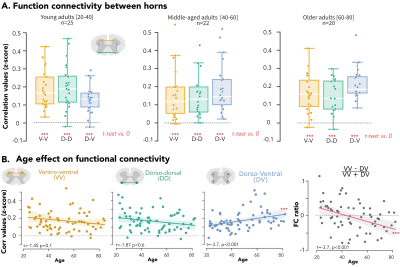 |
0654. AGING
CAUSES STRUCTURAL AND FUNCTIONAL REORGANIZATION OF THE HUMAN
SPINAL CORD
C. Landelle, N. Kinany, S. St-Onge, O. Lungu, B. De Leener,
V. Marchand-Pauvert, J. Doyon
Montreal Neurological Institute, Montreal, Canada
Impact: This study provides the first evidence of
age-related functional and structural changes in the spinal
cord, offering insights into sensorimotor integration
changes across the lifespan and underscoring the importance
of distinguishing between healthy aging and disease effects
in clinical research.
|
| 15:57 |
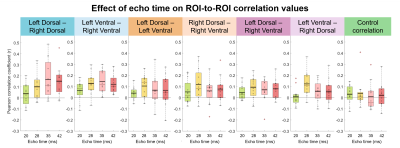 |
0655. Resting-state
functional connectivity within the lumbar spinal cord

C. Kündig, X. Su, P. Freund, G. David
Balgrist University Hospital, University of Zurich , Zurich, Switzerland
Impact: The lumbar cord exhibits intrinsic BOLD signal
fluctuations that correlate between the bilateral dorsal and
bilateral ventral gray matter horns. Acquisition and
denoising parameters influence the observed correlations.
Research is warranted to understand the neurobiological
basis underlying the observed connectivity.
|
| 16:09 |
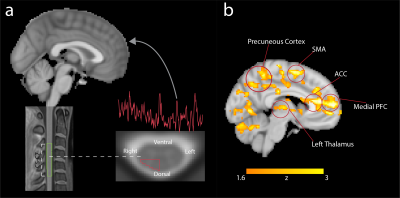 |
0656. Functional
Connectivity Between Brain and Spinal Cord During Noxious Heat
Stimulation
M. Kaptan, D. Pfyffer, C. Law, K. Weber, G. Glover, S.
Mackey
Stanford University, Palo Alto, United States
Impact: This study advances the understanding of pain
processing by revealing significant corticospinal
connectivity during noxious heat stimulation. These findings
could lead to the development of neurophysiological
biomarkers for pain perception, improving diagnosis and
enabling personalized treatments for chronic pain disorders.
|
| 16:21 |
 |
0657. Simultaneous
zero echo time fMRI of rat brain and spinal cord
H. Laakso, L. Wu, S. Ponticorvo, R. Salo, J. Paasonen, E.
Paasonen, M. Kettunen, R. Lagore, L. DeLabarre, E. Polcyn,
G. Adriany, J. Istúriz, D. Koski, D. Idiyatullin, O. Gröhn,
S. Mangia, S. Michaeli
A.I. Virtanen Institute for Molecular Sciences, University of Eastern Finland, Kuopio, Finland
Impact: The dual-FOV zero echo time sequence enables
more comprehensive evaluation of central nervous system
function and reorganization in different diseases or
disorders such as pain and spinal cord injury.
|
| 16:33 |
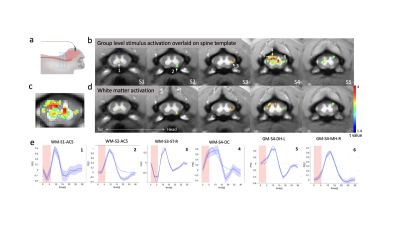 |
0658. FMRI
Detection of Antidromic Excitation in Both White and Gray Matter
of Spinal Cord after Optogenetic Cortical Stimulation
J. Gore, P-F Yang, A. Mishra, F. Wang, Z. Yang, A. Sengupta,
L. Chen
Vanderbilt University Medical Center, Nashville, United States
Impact: This is a first demonstration of antidromic
excitation of spinal cord produced by excitation of the
brain, and of functional MRI responses to “top down” neural
signaling in both gray and white matter in the cord.
|
| 16:45 |
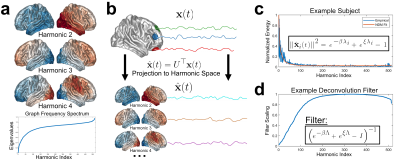 |
0659. Deconvolving
Passive Diffusion on the Structural Network from Functional
Brain Signals
B. Sipes, A. Raj
University of California, San Francisco, San Francisco, United States
Impact: Signal passively spreading through the brain's
white matter network mixes with active "innovation" signals
in fMRI time series. Deconvolving this passive signal
reveals a task-relevant innovation signal, which may lead to
novel interpretations of task-related fMRI activity not
possible previously.
|
| 16:57 |
 |
0660. BrainVAE:
Exploring role of white matter BOLD in preclinical Alzheimer’s
disease classification
Y. Li, L. Xu, Y. Chang, L. Zuo, Z. Ding, A. Anderson, K.
Schilling, J. Gore, Y. Gao
Vanderbilt University, Nashville, United States
Impact: This study highlights the potential importance
of including analyses of white matter BOLD signals to
distinguish subjects with preclinical AD from normal
controls subjects, suggesting a critical role of
degenerative changes in WM in the etiology of disease.
|
| 17:09 |
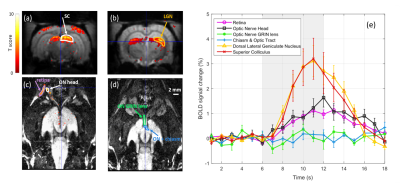 |
0661. fMRI
in Fully Myelinated White Matter: Evidence of Absent Signal
D. Suarez-Baquero, D. Boido, S. Charpak, L. Ciobanu
Paris-Saclay University, CEA, Saclay, France
Impact: This study contributes to our understanding of
brain imaging techniques that rely on blood flow, including
BOLD-fMRI, serving as a prerequisite for interpreting such
imaging in both healthy and pathological conditions.
|
| 17:21 |
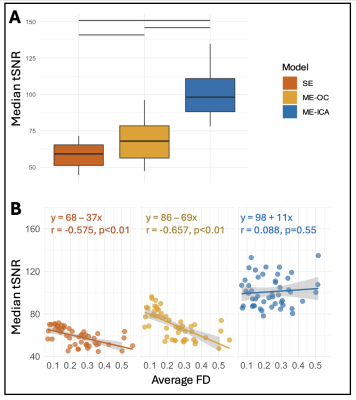 |
0662. Comparison
of multi-echo denoising techniques for auditory brainstem fMRI
in the presence of task-correlated motion
M. Medina, N. Reddy, K. Sitek, M. Bright
Northwestern Univeristy, Evanston, United States
Impact: Task-based brainstem fMRI is greatly impacted by
numerous confounds, including task-correlated motion.
Understanding the capabilities of multi-echo denoising
techniques in the brainstem will allow more reliable and
robust data quality in clinical cohorts that exhibit higher
levels of motion.
|
| 17:33 |
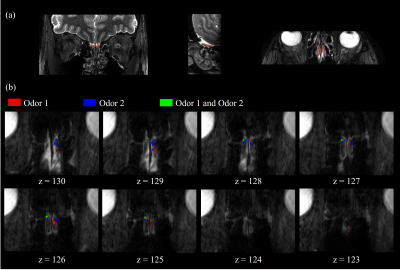 |
0663. Odor
specific activation patterns in the human olfactory bulb
detected by high resolution BOLD fMRI on 7T
X. Zhou, A. Paez, Y. Luo, X. Miao, P. Van Zijl, A. Bakker,
V. Kamath, J. Hua
Johns Hopkins University School of Medicine, Baltimore, United States
Impact: Imaging human olfactory bulb function is
notoriously difficult for fMRI. We proposed methodology that
has the potential to provide a tool for mapping functional
activation patterns in the human olfactory bulb on an
individual level.
|
The International Society for Magnetic Resonance in Medicine is accredited by the Accreditation Council for Continuing Medical Education to provide continuing medical education for physicians.